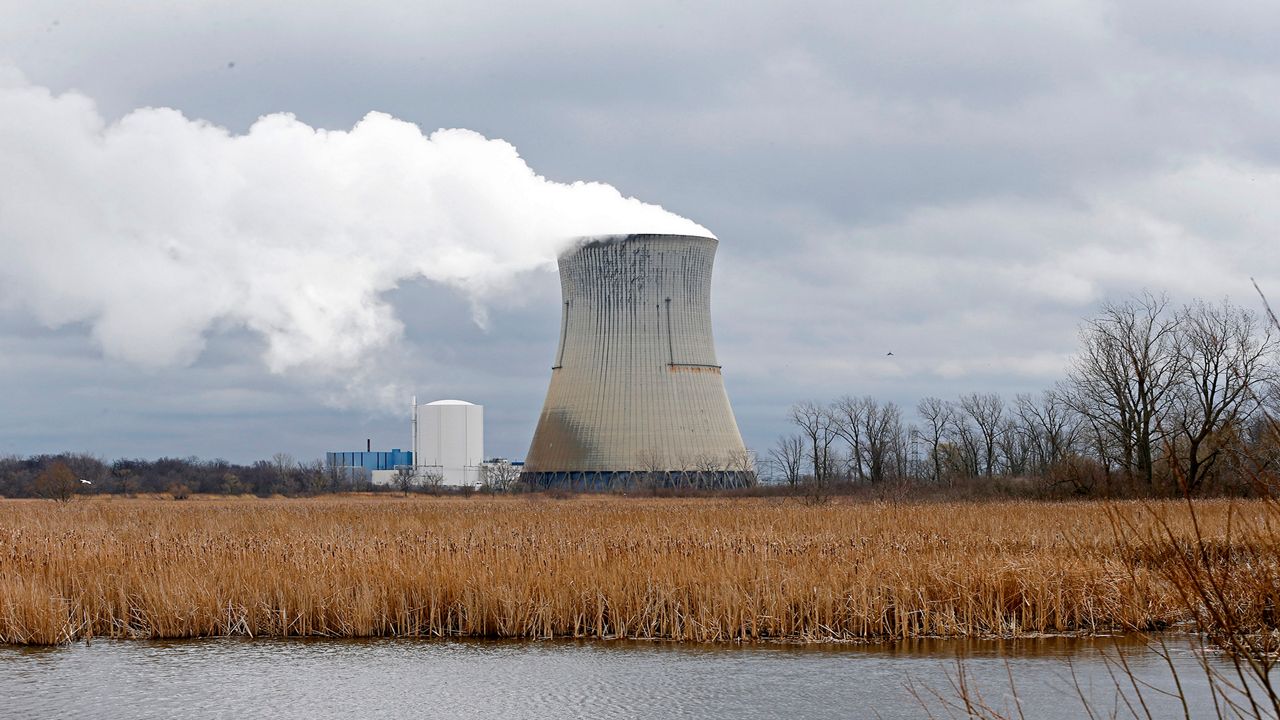CLEVELAND (AP) — Some lawmakers in the Ohio Legislature want to end a subsidy for two unprofitable Cold War-era coal plants that have cost state electric customers more than $340 million thus far and leave them on the hook for hundreds of millions more, thanks to a tainted energy bill that led to the biggest corruption scandal in state history.
A bill in the Senate is sponsored by a Republican and a Democrat, and the more recent House version is sponsored by two Republicans.
The subsidy for the Ohio Valley Electric Corporation plants was a late addition to a 2019 energy bill that initially focused on a $1 billion bailout for two nuclear power plants.
One of the plants is southern Ohio’s Gallia County. The other is in Madison, Indiana, roughly 70 miles (110 kilometers) southwest of Cincinnati.
Bill sponsor Rep. Laura Lanese, a Republican from Grove City, in written testimony this week before the House Utilities Committee, said that the plants are unprofitable and that their subsidy distorts free market principles and chases away competition.
Co-sponsor Rep. Reggie Stoltzfus, a Republican from Paris Township, wrote that the parent bill must be dismantled piece by piece “in order to restore the public’s trust.”
The Legislature repealed the nuclear plant subsidy earlier this year, months after then-Ohio House Speaker Larry Householder and four others were indicted for their roles in a $60 million bribery scheme secretly funded by FirstEnergy Corp. to win passage of the nuclear bailout.
Before the bill, only customers from AEP Ohio, Duke Energy Ohio and AES Ohio, formerly Dayton Power & Light, were charged for the plants, paying $176 million from 2016 through 2019.
The bill required customers of FirstEnergy’s three Ohio electric companies to also subsidize the plants. Ohio customers paid around $115 million in 2020 and $51 million for the first six months of 2021.
The subsidy in place until 2030 will likely adding hundreds of millions more to customer bills over the next decade.
AEP spokesperson Scott Blake said the plants provide “critical generation resources” for customers and should remain open.
The Ohio Manufacturers’ Association has said the plants lost $1.3 billion from 2012 through 2019 and continue to lose money.
The plants were built in the 1950s to provide power to a uranium enrichment facility in Pike County. The contract with the U.S. Department of Energy ended in 2003 and OVEC began selling power to the regional power grid.
The rise of cheaper and abundant natural gas helped make the plants unprofitable, said Sen. Mark Romanchuk, a Republican from Ontario, who introduced an OVEC subsidy repeal earlier this year along with Sen. Hearcel Craig, a Cincinnati Democrat.
Romanchuk and Lanese said OVEC made an unwise decision in the early 2010s when it decided to invest around $1 billion on pollution-control equipment. Debt repayment for that investment extends to 2040.
“They will always be upside down,” Romanchuk said of the plants. “They’ll never be able to come back in my view.”
Romanchuk said that while he and Craig lack the votes to move the repeal out of committee and onto the Senate floor, he hopes an amended version can find traction.
AEP, one of the nation’s largest energy companies with operations in 11 states, initially opposed the parent bill. Company executives supported it after the subsidy for the coal plants was added.
The state’s utility watchdog, Ohio Consumers’ Counsel Bruce Weston in a statement said the OVEC subsidy was worse than the one for the nuclear plants.
“The subsidies are a double whammy with higher electric bills for Ohioans and more air pollution in the environment,” Weston said. “Consumers should not have to pay utilities a penny for these coal plants that aren’t needed for electric service.”
